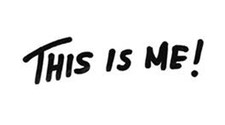Use 'Print preview' to check the number of pages and printer settings.
Print functionality varies between browsers.
Printable page generated Tuesday, 7 May 2024, 10:37 AM
Week 2: Creating strong job applications
Introduction
Developing your career will involve applying for the work you want to do. This might be with your existing employer, with a new employer, voluntary work, short-term contracts or work experience. Whichever option you decide to pursue, you will need to be able to match yourself to the work and the expectations of the employer. This week the focus is on helping you to do that successfully.
The first step is to analyse what is needed for a particular job. You need to find out what is needed and then present yourself in the best way.
In the first part of this week, you will consider how to do this in response to advertised jobs. In the second half of the week, you will create a CV which allows you to respond effectively to more formal opportunities which arise.
By the end of this week, you will be able to:
- review a job advert
- consider what makes a good job application
- explore why it is important to have a current curriculum vitae
- create or update your curriculum vitae (CV).
1 What to look for in job advertisements
Your analysis should begin with understanding what any job advertisement is telling you.
Below is an advert and sample analysis. It is an advert for a graduate to work as an assistant housekeeping manager in the hospitality industry. The company is fictitious. The advert is based on those for similar roles appearing each week on recruitment websites in Myanmar and contains the kind of information that is useful for demonstrating how close reading can tell you a lot about an employer’s needs.
The bracketed numbers and bold text in the advert indicate points that were considered important to understand, or remember, by the person considering applying for the post. Read the text through first without looking at the notes, then read it again noting what the applicant thought was important.
Assistant Housekeeping Manager, Mingalabar Hotel Group
Myanmar – Mandalay
Full Time
Job description
- [1] Manage the Housekeeping Department on the manager’s scheduled days off and all other times as required.
- Assists the Housekeeping Manager in maintaining quality control in all areas of the Housekeeping Department.
- [2] Supervise Laundry attendant, room attendant and public space attendant positions.
- [3] Prepare store requisition, and purchases of supplies and equipment.
- Submit requests for repair and periodic maintenance of cleaning equipment and monitor completion.
- Coordinate with vendors e.g. pest control, laundry services and other outsourced services.
- Check all housekeeping staff members have arrived and find substitutes for absent employees.
- Assists Housekeeping Manager in all areas of daily housekeeping service.
Open to
Male/Female
Job requirements
- [4] Any graduate
- At least three years experience in the housekeeping field.
- Able to use a variety of software packages including Microsoft Excel, Word and PowerPoint.
- Intermediate level in English (spoken and written).
- Good communication skills, leadership skills and effective time management skills.
About our company
[5] Mingalabar Hotel Group has been operating for over a decade and is the third largest hotel group operating in Myanmar. [6] It employs around 10,000 employees across its 25 hotel sites. [7] We are recognised as excellent trainers providing both formal training opportunities and learning on the job with a strong coaching record. We also offer a range of benefits such as freshly laundered uniforms each day, transportation to the hotel site and a group medical policy.
Assistant Housekeeping Manager notes
[1] Opportunity to learn from the Housekeeping Manager and put the learning into practice by being responsible for some of their duties when they are away (learn on the job and apply learning directly).
[2] How many staff are managed by the Housekeeping Manager?
[3] Ask what purchasing system they use, and speak about my experience of the systems I’ve used.
[4] Want a graduate but emphasise how my degree equips me best for the job.
[5] Find out more about company.
[6] Will be proud of being part of a large company.
[7] Mingalabar Hotel Group is a large employer with opportunities for promotion.
One way of learning something new is to observe what someone else does. You have seen the way someone analysed a particular advert, for example, noting the general information about Mingalabar Hotel Group, the responsibilities of the job, the skills required for the position and the opportunities for further training.
It doesn’t matter what kind of job advert you are looking at, it is this kind of detail that you need to concentrate on.
1.1 Picking out the details from a job advert
Many employers will supply a job description and a person specification. The job description tells you about the job and the person specification tells you what abilities, qualities and qualifications are required. In our example of the Assistant Housekeeping Manager, the person specification was called Job Requirements. Job adverts will usually be based on these two parts and present the most important aspects of them.
The job advertisement you’ve already looked at has both these elements, so provides good practice in analysing what is expected of you.
This activity helps you to ‘spot’ useful information in an advert and to interpret what it asks of you.
Activity 1 The Mingalabar Hotel Group advert: what does it tell you?
Read back through the Assistant Housekeeping Manager. Note in the box below, what descriptions of the work you find, and then what descriptions of the person specification it contains. You don’t need to do this in your notebook, unless you would like a record of the activity.
Comment
How easy did you find it? Sometimes you have to make some assumptions because you don’t have all the information. You also need to think of ways to demonstrate that you have the skills the position is asking for as in the examples below.
Description of work
- Confirm all housekeeping staff members have arrived or find substitutes for absent employees – though you don’t know how many staff you can deduce that you would need to know the staff reasonably well and their personal responsibilities to understand who could substitute for absentees.
Person specification
- Good communication skills, leadership skills and time management skills – these are clear skills that you would need to show you had with good examples.
The next section will provide you with nine key areas to look for in any job advert.
2 The key areas in a job advert
As well as reading between the lines on the specific requirements included in a job advertisement, this will also tell you something about the kind of workplace it might be and whether or not it would suit your interests and needs. To do all this though, it helps to look out for nine key areas. This will give the best chance of matching yourself to an employer’s needs.
1 Style and language
Look at the advert. Does how it looks suggest anything to you? What kind of language is used to describe the organisation? It might use factual language like ‘multinational’ or more emotional language like ‘dynamic’ or ‘nurturing’. This tells you something about how the organisation sees itself. If you pay attention to the tone and feel of the advert, you can evaluate whether or not you feel comfortable with its choice of words, and whether your personality or values might fit or conflict with those of the organisation.
2 Brief job description
Look out for the job description and remember to tease out what it is telling you about the role. Does the work genuinely interest you? Even if it does, it must still meet your current needs. For example, it may involve shift work which may not appeal to you. What are the main tasks and the kind of skills they need? Think about the evidence you can provide for these. Remember this doesn’t need to be from a work context. Are there some aspects which are unclear and you would want to find out about during the recruitment process?
3 Qualifications
Look out for specific qualification requirements and whether or not they are preferred or essential.
4 Experience
Sometimes advertisements state that certain experience is needed. Note what this is and consider how you can demonstrate the requirement from different aspects of your life.
5 Qualities
Look at the kind of language used to describe the ideal applicant. If an advertisement for a job asked for a ‘committed self-starter,’ it could imply that there will be little supervision. You would need to find out what a phrase like this means in practice, and then compare it honestly to what you know about your own personality and needs.
6 Location and geographical mobility
These are more obvious pieces of information to spot. You will need to consider if it is practical and cost effective for you to travel to the advertised workplace.
7 Prospects
You might be looking for work which gives you promotion opportunities, so look for any indications on this. Assess whether the employer is looking for evidence that you want to and can progress. Even if the opportunities seem limited, the job could still help to develop your skills and experience.
8 Salary
Where this is stated, it is often a good guide to the level of qualifications and experience you might be expected to offer. You need to compare the salary both with the going rate for that kind of work and with your own needs.
9 Named contact
Sometimes advertisements give a name to contact for further information. It is a good idea to follow this up. Be prepared when you do make contact because the person will form an impression of you from the very beginning. Rehearse your introduction and know what you want to ask. Be ready to say something about yourself as well.
The best way to understand and develop your skill at this process is to give it a go with a real advert. You’ll do this in the next activity.
Activity 2 Real-life practice
Find an advert for a job that interests you. These can be found online on company or employment agency websites as well as in local newspapers.
Work through the nine key areas and write down your thoughts on each in your notebook.
Also, make a note of where the job was advertised and the date in case you want to look back at it in the future.
Comment
This activity may well have been a little easier than looking through our first example, as it was probably more relevant to you and you’ve had some practice already. However you found it, try and always bear the nine key areas in mind when you consider a job advert.
In the next section, you’ll learn more about the specific language used in job adverts, job descriptions, person specifications or job requirements, and what it means.
3 What do they mean?
View the document ‘Skills that employers want and how they can be developed’ in the Resource pack. This shows the types of skills employers may want, the way they might describe them, and provides an opportunity to illustrate how you might develop these through work, education or your interests. It will also act as a useful tool when completing a job application.
You will see from this that there are four clusters of skills:
- self-reliance
- people skills
- general skills
- specialist skills.
The middle column details specific skills or qualities and lists the words used to describe them. Of course, different employers might mean different things by them. So, ask questions if you can within your network or the named contact for the job advert.
Column 3 gives examples of how you might have already developed or be able to develop some of these generic skills. The examples could act as prompts for you when completing a job advert.
The next activity has some similarities with the approach you took in Week 1 when you considered your experiences, the abilities you developed from them and evidence for these. The next step is to learn to do this in relation to a specific job and the next activity gives you this opportunity.
Activity 3 Showing how you meet the job requirements
Revisit the advert you considered in Activity 2.
Write down the six most important characteristics and requirements of the job, leaving space to note down evidence of your suitability against each point. Remember to do this in your notebook.
You might find it useful to look back at your notes from Week 1.
Comment
Think back to the first week of the course – do you feel more confident that you can match the requirements in a job advert to your abilities and also show an employer how your past experience fits with their needs?
Once you’ve decided that a job advert is relevant to you, then the next step is to present yourself to the employer for the vacancy. In the next section, you consider how to strengthen your new skills with job applications further.
4 How to present yourself to an employer
Many international employers are moving towards a competency-based assessment of candidates.
Competencies are a set of knowledge, skills, abilities and behaviours. When you apply for a job, an employer will ask for a range of these, and you need to show how you can meet these by providing evidence.
The basic idea behind competency-based recruitment is that if you can demonstrate you did something in the past, you can do it in the future.
So, if you come across this, it means you have to adopt a particular approach to be successful. Fortunately, there are techniques that greatly increase the chances of success.
Activity 3 will have refreshed your skill in using ‘evidence’ of what you have done in the past to show what you are capable of now. You can now enhance this by learning to use a technique that is very useful for answering competency-based questions you might find on an application form.
It is a widely used technique known as ‘STAR’.
When using this technique, you think about a specific piece of experience you want to offer up and describe it in the following way.
- Situation – Think about a specific situation and when it happened.
- Task – Was a task required in that situation and what were you supposed to achieve by completing it?
- Action – What action(s) did you take to complete the task?
- Results – Think about the outcome of the actions you took.
This really helps you to organise your thoughts. However, this technique alone may not keep you entirely on track, so it can be used in combination with another known as ‘RAPPAS’. This translates as:
- Relevant – The skill you put forward needs to be relevant to what is being asked for.
- Action – Include what you actually did (rather than what you might do if in a hypothetical situation), or something you learned.
- Personal – Focus on what you personally did, rather than what other people did or what happened generally. Don’t say what ‘we’ did, say what ‘I’ did.
- Positive – Use a situation with a good outcome, even if everything was not achieved as planned.
- Appropriate – You need to feel comfortable to talk about the situation, so choose examples that would allow this.
- Specific – Give one example, not a mixture of different examples.
It is easier to understand this when you see it in practice, so in the next activity you’ll review someone else’s attempt before trying it with yourself.
Activity 4 Thazin’s competency evidence
Read the following case study and then consider whether Thazin has followed STAR and RAPPAS to enable her to present the strongest evidence of her ability to manage conflict. Concentrate on the six points of RAPPAS and write your thoughts in the box provided.
Case Study
Thazin has applied for the job of production shift leader in the manufacturing plant where she currently works as a materials buyer. One of the skills listed in the person specification is handling conflict and the application form asks the candidate to:
Please describe a conflict that you have had to manage, and say how you approached the issue and what resolution was achieved.
Thazin’s response is as follows:
I used to work at a local retail shop. The manager was often not there on a Saturday. Mostly, on Saturdays, there would be three staff members like me, but not always the same three. Most of us got along OK but there was one woman, Myint Myint Than, who tended to act as if she were in charge when the manager was not around. For example, she was always telling us what needed to be done when we know for ourselves.
One Saturday, a customer asked one of the new members of staff to put something aside for them for a day or two until they got paid. The new staff member didn’t know if this was allowed or not and started to ask me for advice. But Myint Myint Than butted in and, in front of the customer, started saying that it was not allowed because we couldn’t show favouritism amongst customers. The customer was embarrassed and handed the item back and left the shop. The volunteer was upset and said that she didn’t think Myint Myint Than had a right to tell her off in front of the customer like that.
Myint Myint Than said she had every right if she was about to make a mistake. I tried to cut in and say I’d been helping, but she just talked over me. I was really angry but there didn’t seem to be much that I could do at the time.
When our manager was back in, I explained to her what had happened and said that I was not happy with working with Myint Myint Than. She agreed that she would ensure we were working in different parts of the shop in future, so I was glad I had raised the issue then because it resolved the problem of possible conflict between us.
Comment
Relevance – Not strong because it shows how the manager of the shop chose to deal with a member of staff who found it difficult to work with another. It did not showcase Thazin’s own ability to find a solution to the problem between her and her colleague.
Action – Meets this criteria because it says what actually happened.
Personal – Meets this criteria because it is clear what Thazin did for herself.
Positive – Not strong because it avoids rather than resolves the issue. Although the manager arranges for Thazin not to work with Myint Myint Than, the actual conflict was between Myint Myint Than and the new member of staff, and this could happen again.
Appropriate – Yes, this is probably ok, in that it is not too personal or emotive an example, provided that Thazin does not get angry all over again if asked about it in interview.
Specific – Meets this criteria because it is an example of one incident.
Practicing with someone else’s example is a good way to get a feel for what works and what does not. However, it is always better to use your own example, so if you have time you might want to revisit Activity 4 now. This is not essential though because you will revisit the technique in Week 3.
So far this week, you have considered the need to:
- find out about the work and what skills are needed
- make the most of the main skills you have that are required to do the job and provide examples that show these skills.
Next, you need to think about how to complete an application form and make sure you do yourself justice.
5 Completing application forms
Making a strong application takes time. Getting it right is important because most candidates are screened out from their application forms. Employers often receive far more applications for a job than they can interview. This means they will read quickly through applications, maybe looking for key words and phrases. It is therefore vital that your form shows you are a clear match to their needs. So, think carefully about how you describe your activities and skills to match those you’ve identified from the advert.
Your objective needs to be to persuade the employer that you are worth interviewing because you seem to be a suitable candidate for the job. Your chance of doing this is higher if you submit an application form which is convincing and interesting.
Often, the information in your application form is all the employer will have about you. Be positive about what you have to offer, and leave them to spot any potential negatives for themselves. Showing that you match their needs is important, but remember that good presentation is also vital. Use the guidance below to ensure that your application is the best representation of you.
Application checklist
- You won’t get your application spot on first time, so make some photocopies of the original form for drafts or save your drafts on a PC.
- Do what the form asks you to do – for example, use block capitals or black ink if these are the requirements. Don’t send a CV unless you are asked for one.
- Make sure that you complete all the sections. If some sections do not seem to apply, write ‘not applicable’.
- If there is insufficient space for factual details, such as dates and addresses of previous employers, add a separate sheet of paper, labelled clearly with all relevant details. Check before doing this that this is permitted.
- Prioritise what you include. For instance, if there is not enough space to do justice to general interest information, choose those that best illustrate something relevant to the employer.
- Watch out for questions that have more than one element, and make sure you respond to each part of the question.
- Avoid unexplained gaps in your employment record. If you have been unemployed, say so, but point out any voluntary work or other projects you did during that period.
- Use active words to describe yourself, such as 'organised', 'responsible' or 'managed'. These create a more confident and competent impression.
- Finally, remember to compare what you have written with the analysis you did of the skills needed in the job advert.
- Before you send it off, do a last check:
- Visual impression – is it neat and easy to read?
- Accuracy – have you put the right information in the right places? Are all your dates right?
- Spelling and grammar – are there any mistakes you need to correct?
Always keep a copy. It might be some time before the interview, when you will need to reread it.
This section has considered how to best present yourself when a job has been advertised and the recruitment process requires you to complete an application form. Sometimes, however, the employer might ask you to submit a curriculum vitae (CV) rather than an application form.
So, this is the topic for the next section.
6 What is a curriculum vitae and why do I need one?
The words ‘curriculum vitae’ are Latin and translate as ‘course of life’. In practice, a CV has become a brief account of your education, qualifications and previous occupations used in support of a job application. Depending on when you are writing it, you may have more or less to include in it, or you may want to emphasise some things more than others. Even if you already have a CV, it is wise to regularly review and update it, so that the content still fits with your career goals. For instance, if you want to make a change from one career path to another, you might need to emphasise different aspects of your experience.
Activity 5 Assessing the value of CVs
This activity will familiarise you with some of the benefits of writing and maintaining a CV. Read what people have said to describe their personal experiences of creating a CV and what they see as the benefits.
Tin Win:
Regarding writing CVs, it has been one of those challenging tasks where you never get 100% perfect and you keep refining it.San San Win:
I see many CVs, and the ones that are really good, the ones that always stand out, are the ones that are clear and concise.Hla Myint:
A potential employer will make that first decision. It's the first impression that they get. It's so very important that a CV is well produced.San San Win:
Bullet points. Get to the point. Say what you want to say. Don't flower it with lots of things that the employer doesn't really want to know about.Hla Myint:
It doesn't have to be superbly well designed, but it has to be neat and tidy.San San Win:
Say what your qualifications are. Say what the grades are.Hla Myint:
The spelling has to be perfect and anything else will not do you justice.San San Win:
And if you've got the correct qualifications and the correct skills, the employer will be in touch.
Jot down the main points made, if you find them helpful.
6.1 What should be included in a CV?
Whether you are updating an existing CV or creating a new one, you need to know what to include and exclude.
Any CV should include:
- your contact details
- a ‘personal profile’, which summarises your main skills and career aims
- your education and qualifications you have gained including dates and grades
- any work experience, stating your responsibilities and main achievements
- your main skills
- relevant interests or activities, such as languages, IT or sports captaincy
- your references. Give the names of two people who have agreed to provide a reference, or say that you can provide details on request.
You don’t need to include your nationality (unless you need a work permit), age, marital status or health.
Now you need to understand the different ways in which this information can be presented in a CV. You will explore two types of CVs in the next section.
6.2 The main types of CV and when to use them
There are different ways of writing a CV and you need to choose the one which works best in your situation and helps you succeed in getting interviews.
Most employers do not specify which kind of CV to use, so it will be your decision to make. However, some job areas do expect a particular kind of CV. So, make sure you find this out before sending yours in. In the next sections, you will be introduced to two basic types of CV: the chronological CV and the functional CV.
6.3 Chronological CV
This is the most commonly used form of CV and gives information about your work in date order. It shows where you worked, for how long, the kind of work you did and your main achievements. If you are writing your CV for the first time, this is the most useful type to create.
Have a look at the example of Min Zin Soe Tint’s CV below.
Min Zin Soe Tint
No1, Main Road, Taunggyi Town
Tel: +950812122114
Email: minzinsoetint@gmail.com
Personal profile
I am a confident, mature and hard-working person who is reliable and able to work on my own initiative or as part of a team. I have a methodical, customer-focused approach to work and a strong drive to see things through to completion. I am self-motived and willing to learn to improve my personal and professional development.
Qualifications
| 2019–present | Diploma in Business Law, Yangon University of Distance Education, Yangon |
| 2015–2017 | Diploma in English, Mandalay University of Foreign Language, Mandalay |
| 2010–2015 | B.A (Hons) Geography, Mandalay University, Mandalay |
| 2010 |
Basic Education High School (B.E.H.S -1), Taunggyi Township, Shan State Passed matriculation exam with distinction in Geography and Economics |
Work experience
| 2018–present | Sales Team Leader, Hello Co., Ayetharyar Township, Taunggyi, Shan State |
Main duties:
- Training new team members.
- Generating daily sales figure, producing weekly and monthly sales forecast report for the senior management team.
- Establishing and maintaining positive business and customer relationships.
- Analysing the current market conditions and competitor information.
| 2015–2018 | Store Assistant, Happy Mart, 65th x 107th Chanmyathazi Township, Mandalay |
Main duties:
- Answering customer queries.
- Handling cash, shelf stacking and stock taking.
- Demonstrating new products to customers.
- Recruiting and managing the employees.
| 2012–2015 | Part-time Volunteer, Bharmaso Community Organisation, Mandalay |
Main duties:
- Cataloging new arrival books, magazines and journals.
- Checking out books being borrowed and receiving the returning ones.
- Helping visitors find the resources they are looking for.
Additional information
I have a driving licence. I am a qualified leadership and management trainer (Human Resource Development). I understand time management, organisational awareness and problem solving are essential characteristics of an efficient general manager.
I am experienced using Microsoft packages especially Word, Excel and PowerPoint.
Activities and interests
Playing Chinlone, football, swimming, reading, travelling, playing guitar and singing.
References
Available on request.
Min Zin Soe Tint’s example shows some of the advantages this kind of CV offers. For example:
- it shows potential recruiters or employers the story of Min Zin Soe Tint’s employment so far
- it allows him to highlight key skills and to show progress made
- it is easy to produce.
However, it works less effectively where there are gaps in employment. It can be problematic if you have changed jobs very frequently, or had long periods of time out of the workplace. This might need some explanation. It does not need to be done on the CV, but you might send an accompanying letter which gives more information.
The other problem you might have noticed is that it is not easy to pick out key achievements or skills because they are listed by individual jobs. You will learn later on how to create a strong personal profile statement, which summarises your achievements and skills to help to counter this risk. There are limitations to this type of CV, as it may not convey a sense of you as a person very clearly.
The second type of CV handles this aspect better, as you will see in the next section.
6.4 Functional CVs
A functional CV is one that focuses on you and your skills, rather than your work history. It allows you to say more about your ability and the things you have achieved in your life. This is because it presents the information according to the type of work you have done and the responsibilities you have had, rather than by individual jobs.
Look at Zin Mi Mi Aung’s example CV below.
Zin Mi Mi Aung
5 Ywar Ma Kyaung Street
Hlaing Township, Yangon
Mobile: 0975565443
Email: zinminminaung@gmail.com
LinkedIn: www.linkedin.com/mm/zinmimiaung
PERSONAL PROFILE
A Human Resources manager with experience in both the public and not-for-profit sector. Have up-to-date knowledge of Myanmar labour law and practices, and am results focused. Have an excellent track record of achieving individual and team objectives, and welcome challenge as demonstrated by my ability to progress in my present organisation. Strong team worker, flexible and adapt well to changing goals. I am now keen to find a position that offers the opportunity for me to broaden and develop my HR and managerial responsibilities.
SKILLS AND ACHIEVEMENTS
People skills
Good communicator – able to enthuse others to work with me on setting up new recruitment procedures, as demonstrated by effective implementation.
Natural team worker – I have had consistently good feedback about my cooperation and reliability and been invited to work on projects outside my own role.
Networking skills – build relationships with new colleagues, both face-to-face and online, and a member of the Myanmar Society of Human Resources.
Technical skills
Problem solving – methodical in analysing data to understand problems and then advise on appropriate action. For example, I reviewed which job advertisement methods were most successful in attracting candidates and now managers are using those more regularly.
IT/computer literacy – competent user of Microsoft Office, Excel, PowerPoint and Outlook, Internet, and Myanmar and English typing.
Personal and transferable skills
Planning and organising – good at managing own time, evidenced by the ability to juggle different deadlines at work to successfully complete projects.
Numeracy – able to produce and analyse basic statistical data with high degree of accuracy.
CAREER HISTORY
Human Resources Deputy Manager 2010–present | Support for Life Charity |
- Responsible for recruitment and induction of all permanent and voluntary staff.
- Ensuring recruitment procedures conform to legislation.
- Creation of statistical reports to help management to see which recruitment processes are the most effective.
- Arranging induction courses for all new starters.
- Liaising with manager to review how new recruits are settling into their roles.
- Advising managers on people-related issues.
Human Resources Administrator 2007–2010 | Support for Life Charity |
- Advertising all vacancies and responding to applications.
- Arranging interviews.
- Post-interview administration, including letters of acceptance or rejection, taking up references, arranging medicals, etc.
- Dealing with telephone enquiries from managers and job applicants.
Career break 2003–2007 | Raising a family |
Receptionist 1999–2003 | Yangon City Council |
- Answering telephone and directing calls to appropriate staff.
- Dealing with on-site visitors and members of the public.
- Maintaining room bookings system.
- Acting as First Aid contact for ground floor staff.
EDUCATION AND TRAINING
| Diploma in Human Resource Management, Yangon University of Economics | 2007 |
| Bachelor of Business Administration, Yangon University of Economics | 1995–1999 |
| No. (2) Basic Education High School, Hlaing Township | 1995 |
| (Distinction in Economics and English) |
ADDITIONAL INFORMATION
Election commissioner (EC) of class, Yangon University of Economics – representing views of my classmates to the University.
Served as a representative on the staff communications committee at Yangon City Council for two years and contributed to introducing new staff suggestion scheme.
Excellent spoken and written English.
Full driving licence.
As you can see, this highlights skills rather than job changes. Therefore, it can be useful if the job you are applying for is different from those you have done previously. The functional CV allows you to emphasise strengths and skills developed in different situations.
It is generally easier to group skills together and you can use the four skills clusters from ‘Skills that employers want and how they can be developed’ to do this. You might have noticed that this example makes an attempt at that. The disadvantage with this type of CV is that it is less ‘standard’ than the chronological type. You have to think about how you want to prepare it to ensure that is it clearly relevant to the job. Any gaps in employment are likely to be less prominent, but assume that employers will notice this and you should be prepared to explain them at the interview.
If you already have a CV in the chronological style, you might want to write a second functional one as a way of clarifying what skills you have to offer.
Either of these types of CV would be as part of a job application, where a CV is required. In this case, though, you would need to tailor it to reflect the specific job.
The place to begin though is to create a basic CV that you can later tailor to different situations. The next section offers some general guidance on how to do this.
6.5 Preparing a CV
It is very useful to always have a good basic CV to hand. Even if you are not immediately seeking work, you never know when one of your contacts might spot an opportunity and open a door for you. So, you need to have one you can update or tailor quickly.
Your CV both gives facts and creates an impression of the kind of employee you would be. Just like an application form, it needs to be accurate, clearly presented, easy to read and not too long. Remember though to include brief, specific examples that demonstrate your skills and achievements to make your CV persuasive.
Whereas an application form tells you what the employer wants to know, for a CV you have to decide that for yourself. Be concise. Aim for a CV no longer than two sides of A4 paper. This means including only key relevant information. The examples show you how this can be done by the use of headings and bullet points.
Make your CV distinctive by including activities or achievements that may be unconnected to your work, but that still demonstrate specific abilities that may interest an employer. You might be relieved at this point to learn that you do not necessarily have to do all the work on CVs yourself. There are online tools which can help. In the next section, you’ll get the chance to put into practice everything you’ve learned about CVs this week.
6.6 Bringing your CV to your network
With the uptake of social media by large companies and recruitment agencies to search for potential employees, it is useful to have both a traditional and online CV.
Your final activity for this week is to use a template to help you to create both.
It is a slightly longer activity than others, but you do not need to do it all in one go. Just remember to keep saving the work you do as you go along.
Activity 6 Creating your CV
In the Resource pack, you'll find a template for a chronological CV. Complete it with the help of the information that you have gathered in your notebook so far. You may also find it useful to look back at Min Zin Soe Tint’s CV from earlier in the week.
Comment
Well done for completing this last activity of the week. You should feel proud that you now have a CV to work with. What an achievement.
That was your final activity of this week, packed with information to help you understand job adverts, and write relevant and solid job applications and CVs. You can check your understanding in this week’s quiz. There was a lot of information to take on board this week, so remember that you can use your notes or go back to the study material if you want to check an answer.
7 Week 2 quiz
Well done, you’ve just completed the last of the activities in this week’s study before the weekly quiz.
Go to:
Open the quiz in a new tab or window (by holding ctrl [or cmd on a Mac] when you click the link).
8 Summary
You have come a long way since the beginning of the course. This week, you have started to bring together ideas about your working life that you can use in a practical way.
Some of you will want to do this almost immediately. Others may still be planning when and how to use the knowledge and skills you have developed in creating applications and CVs. Just remember to be ready for those opportunities which are unexpected, that come at a time which never feels quite right, but might be just the right next step for you.
Next week, you will move onto the next stage in the process – the interview. See you there.
You should now feel that you can:
- review a job advert
- consider what makes a good job application
- explore why it is important to have a current curriculum vitae
- create or update your curriculum vitae (CV).
You can now go to Week 3.










